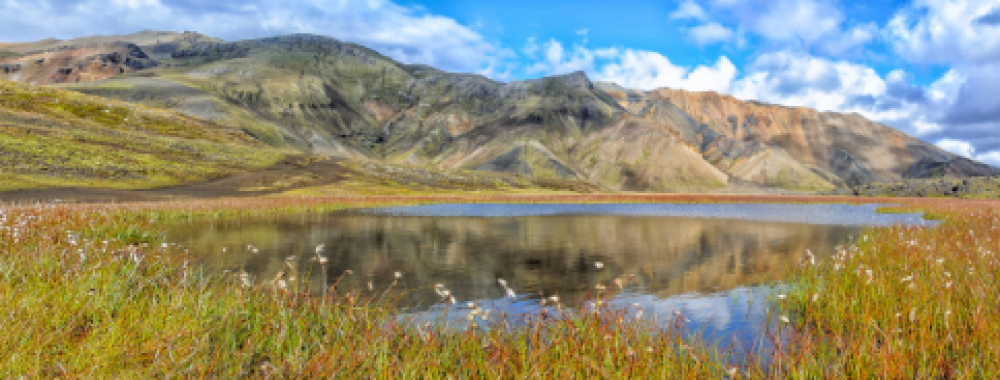- About Us
- Hotels
- Resorts
- Excursions
- Car Hire
-
Blog
- Food & Drink
- Things to do in Iceland
- Iceland Volcano Latest News
- Summer in Iceland
- People & Places in Iceland
- Climate, Geology & Seismic Activity in Iceland
- Travel & Hotels in Iceland
- Northern Lights in Iceland
- Reviews
- Icelandic Culture & History
- Landscape & Wildlife in Iceland
- Blue Lagoon and Hot Springs
- Corporate Incentive Group Trips to Iceland
- Iceland and COVID-19
- Geysir Geothermal Area Iceland
- Super Jeep Tours
- Films & TV Shot on Location in Iceland
- Contact Us
The chilliest thing about Iceland is its name! Despite Iceland's northerly location, Iceland is more solar than polar which is thanks to the warming effects of the Guff Stream which provides a temperature climate all year round.
However, Icelandic weather is unusually volatile and can never be predicted! Are you struggling to pick a season to travel to Iceland? Keep on reading to reveal what Iceland is usually like during the 4 seasons.
SPRING IN ICELAND
In Iceland, Spring arrives in April when the temperature begins to warm up and nature awakens from its winter rest with sprouting green grass and lupine flowers. April and May represent Spring shoulder season for savvy travellers trying to score a travel deal before the summer tourists arrive.
Activities in Spring include fishing, whale watching and golfing, and migratory birds return to gradually greener pastures. On the mountain slopes, the last of the snow melts and the fresh scent of spring fills the air. More museums and hotels are open during spring, but roads in the central highlands are still closed.
The average temperature in Spring is unpredictable but usually rarely rises above 0 degrees.
SUMMER IN ICELAND
Summer in Iceland begins in June and ends around September when meadows turn neon green and Viking horses and sheep are released to roam the beautiful countryside. Summer in Iceland can be wonderfully warm, plus there is an added bonus of the magnificent Midnight Sun which gives 24 hours of daylight.
The midnight sun appears in Summer, meaning the days are incredibly long and people gain extra energy. Iceland Summer is a paradise for photographers who want to capture nature doing the 'golden hour'. These long days are convenient for travellers because they won't need to reach a destination before night falls.
Many tours are available in Summertime and you will be able to see many locations during the long days, including mountains, glaciers, volcanos, and waterfalls. Also, if you are into festivals, there are plenty of outdoor music festivals that occur in Iceland during the Summer.
AUTUMN IN ICELAND
Autumn begins in September and October which is when the Northern Light season starts (usually one of the busiest times for tourists to visit Iceland to capture the Northern Lights). Daylight hours are still normal and the cultural calendar heats up with film, art and music festivals, including Reykjavik's favourite Iceland Airwaves.
There are many adventure activities that take place in Autumn and it's a great advantage for tourists to take advantage of the Autumn travel deals. The season brings marvellous beauty to the moss growing on ancient lava formations, giving nature sites an added splash of browns, reds, and orange.
Autumn is similar to springtime in temperature, between 0 degrees to 10 degrees, though Autumn feels windier, wet, and possibly colder. Maybe this is because of all the leaves falling from the trees and blowing in the wind. Autumn works similar to the UK where the harvest crops will appear so many travellers can go blueberry, crowberry and strawberry picking.
WINTER IN ICELAND
Winter is remarkably mild with the average January temperature in Reykjavik similar to New York City or Hamburg (-0.5 degrees). It is not unusual to see snow in October or April, but it rarely stays on the ground for more than a few days. Winter in Iceland lasts longer than any other seasons (between November and March) and are the darkest months of the year, with little sunlight.
Outdoor life in Winter goes on as usual when horseback riding, outdoor swimming and snow adventure activities stake on an added element of excitement under the beautiful Northern Lights. Additionally, Christmas in Iceland is filled with pure joy with twinkling fairy lights in every garden and on every street.
Winter is a great time to cuddle up indoors over a nice cup of hot chocolate or bathe in one of Iceland's many hot tubs, hot pools, or hot springs. You can enjoy hot springs all year round, however, they feel especially nice with snow blankets surrounding the landscape.
- View all our latest offers here
-
Reykjavik City Breaks
from £649.00 View offers -
Fly Drive Holidays Iceland
from £679.00 View offers -
Guided Iceland Bus Tours
from £649.00 View offers -
Luxury Iceland Breaks
from £849.00 View offers -
Northern Lights Holidays Iceland
from £679.00 View offers -
Top 10 Iceland Holidays
from £699.00 View offers -
North Iceland Holidays
from £999.00 View offers -
Group Travel to Iceland
from £849.00 View offers
Call us on +44 (0) 1773 850222

Thank you so much Gareth for organising such a lovely holiday for us! We gave a basic outline of what we wanted from our holiday and Gareth organised everything. Everything ran very smoothly and what an amazing experience. Thank you for all your suggestions, so glad we took them on
We are here to reassure you that you can trust our team with your Iceland holiday plans, knowing that all bookings with us are ATOL protected









